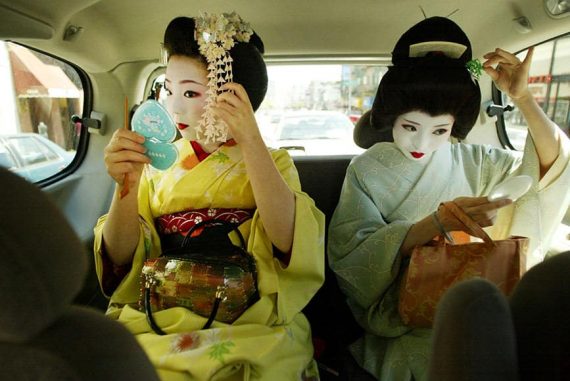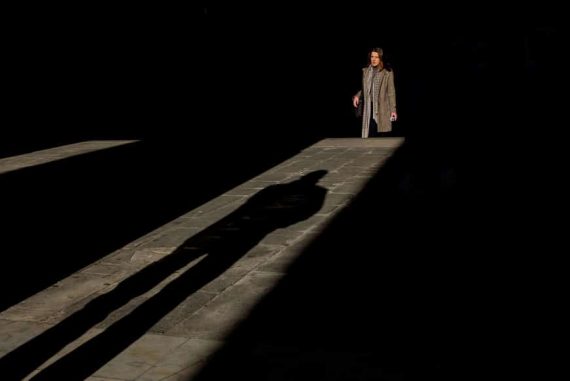Eduardo Asenjo Matus








My name is Eduardo Asenjo Matus, Fujifilm X-Photographer from Chile and ambassador of the photography store Tripodes.cl. I have been dedicated to photography since 2015.
Before I entered the world of photography, I had a coffee bike shop where one day, I met a client who had a beautiful mirrorless camera with an old lens. It really caught my attention because of the design, and I asked him a couple of questions and began to investigate this type of camera.
One night I then decided to study photography independently without even having a camera. Luckily my family eventually gave me a mirrorless camera for my birthday.
When I learned the basics of photography, I realized that I did not want to take “normal” photographs as they did not attract my attention; I wanted to show something else. I wanted to represent the noise of the street with a Long Daylight Exposure and with the intentional movement of the camera.
After mastering the technique, I started my first photographic project called “The Sound of Silence,” which has been published in many photography magazines and websites around the world. It was also exhibited in Portugal, India, Ecuador, and Chile.
In 2020 I published my first photography book, also called “The Sound of Silence,” and this year, I published my second book with the collaboration of a great Chilean artist Ana Tijoux called “Insurrection.”
Main Gear Talk
My first camera was a small compact Fujifilm X10, a work of art that you can always carry with you in your pocket. Following this, my family gave me a Sony a6000 for my birthday, and it was with this that I learned the basics of photography.
One year later, I returned to Fujifilm, and it’s with this brand that I continue to work as an ambassador in Chile. (I personally don’t like the feeling of Sony in the hand, it seems that you walk with a computer).
In the street, the X10 is the perfect camera, most people confuse it with an analog camera, and you go unnoticed among the other photographers; this helps people act more normal, and the scenery does not change. Apart from this, it includes a built-in ND filter which makes it ideal for long exposures.
Cameras
Fujifilm X100V – I tried many different cameras and brands, and for the style of photography that I like the most, Daytime Long Exposure, I have my favorite camera, the Fujifilm X 100V. I use it for personal projects and street photography, I love its small size, built-in ND filter, and retro design.
I always carry it with me; it inspires me to create new and crazier projects.
Fujifilm X-T4 – For studio photography, this is my favorite. It has double SD slots for supporting everything, a larger battery (perfect for long days of study), a fully retractable tiltable screen for difficult angles, and the option of changing lenses.
Fujifilm Instax Mini 90 – I love this camera to make double exposures and for artistic photography. I can see the printed result in less than one minute. Of all the Fujifilm cameras, it is the one that gives you the most configuration options. I often use it to give away the prints to the people I photograph after a studio session.
All my cameras are silver because I don’t like black cameras.
Lenses
Fujinon 16-80mm f/4 WR – I have this lens attached to my X-T4 because it is weather resistant, and I live in one of the rainiest cities in Chile. Its size, weight, and wide focal length make it the perfect combination for this camera.
Fujinon 23mm f/2 – this is a very compact and bright lens, and if you use it with the adapter and a filter, it is sealed from the weather. It is my favorite focal length for street photography.
Fujinon 18-55mm f/2.8-4 – this lens was included with the X-T1, which was very useful to me while I waited for the arrival of the X-T4. It is a very versatile, compact, and lightweight lens to always carry in your backpack.
Lights/Triggers
To be honest, I didn’t use flashes much when I started taking pictures. Working indoors, I didn’t have a flash, so I borrowed some LED construction lights and a sheet from my parents’ house to create my first softbox.
It was not the most suitable light, but it helped me a great deal when starting out.
Godox V1-F – my favorite flash so far as it’s powerful, and I like the battery because I don’t like to carry AA batteries around that wear out much faster.
Godox TT350 – the first flash I bought to complement my X100V, which is very light and compact. The only bad thing is that it uses AA batteries. I always carry it in my backpack and use it very little, it’s like one of those objects that you carry just in case.
Godox X2T – another of my early flash units. I hate this trigger as it feels of poor quality and very fragile; I always think that I have to buy a special bag for it as protection. It also uses AA batteries, which is why I hate it so much more!
Bags/Straps
Mammut Seon Courier 30 – I bought this backpack only recently, and although it is not a photography backpack, it does resist the rain and has a lot of space for all my equipment. I liked this backpack because it does not attract attention, it is completely black, and the brand is hardly visible.
Amunche leather Straps – I use these for my two cameras. For the 100V, I ordered a special size for me in black and for the XT4 in the normal size in marine color. They are leather handmade straps made in Chile; check out their website in case you want to see more models https://amunche.cl.
I have another camera bag, but I don’t remember the brand. It is very old and has a bad closure. I will often just use my Harry potter hat to protect my little 100V.
Tripods
Benro FIT19A – this is a basic tripod, but it does everything I need it to. When I go on the streets, I prefer to go without it as I use whatever I find on the streets as support. I can travel much lighter without a tripod.
Hardware & Software
I recently upgraded my old Macbook pro 13” from 2012 to a Macbook pro 16” M1. When I have to edit at home, I use my Asus Pro Art 24” screen, which I am using less and less.
To upload content to RRSS. I use my iPhone 13 pro.
For editing, I use Adobe Photoshop 2022 and Adobe Lightroom Classic.
When I go out, I take a lot of photos, and in the end, I only keep a couple. I edit them, and I upload them to my website and RRSS. This is why I don’t use presets in street photography.
In studio photography, I create a preset for each session depending on what the client needs.
Misc.
When I go out, I always take an extra pair of socks, an extra shirt, my Harry Potter hat, and a windbreaker jacket.
I also like to take my Victorinox Ranger Wood 55, a set of Allen keys (I ride a bicycle), a bottle of water, a bar of chocolate or whatever sweet, my photographer’s credentials, work gloves, an extra box for my hearing aids, wallet, sketchbooks to draw and write ideas with, goggles and my Victorinox I.N.O.X. Mechanical watch with paracord strap.
I admit I have an obsession with keeping time and watches.
Final Words
In one of my first ever photography jobs, I had to record a short film; it was a long day and with very interesting captures. When I got home, I checked the photos on the camera, and everything looked in order, so I passed the SD card to the computer, and the photos weren’t there. I checked the card on another computer, and they weren’t there!
I had to use part of the payment money to buy the photo recovery program :(
www.eduardoasenjomatus.com | @eduardo.asenjo.matus


Check out these 8 essential tools to help you succeed as a professional photographer.
Includes limited-time discounts.













